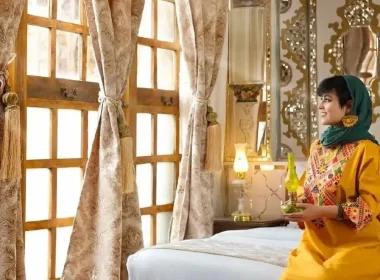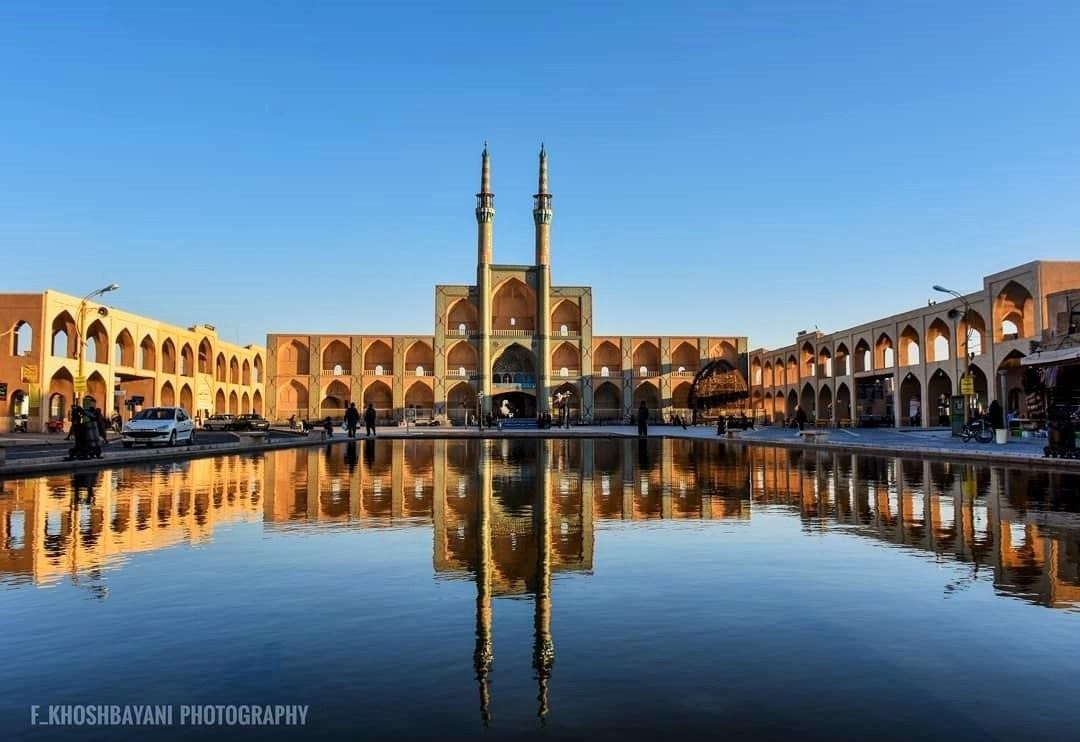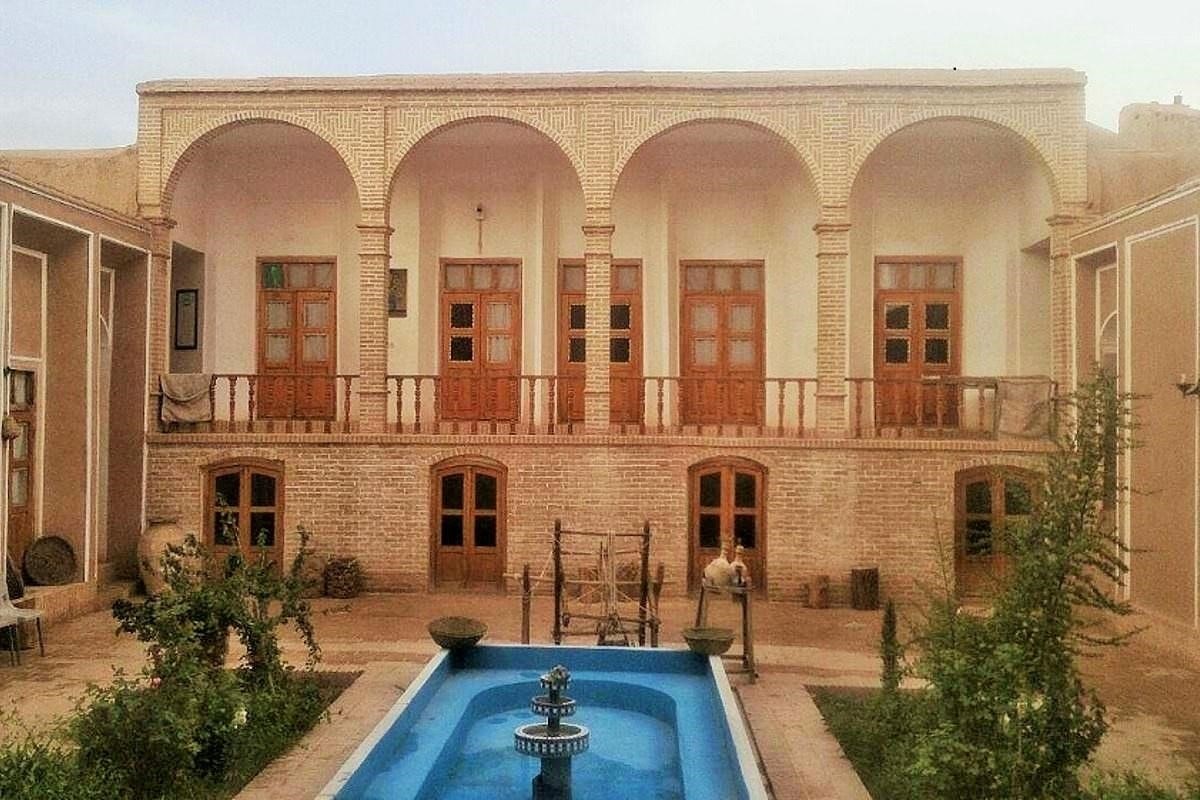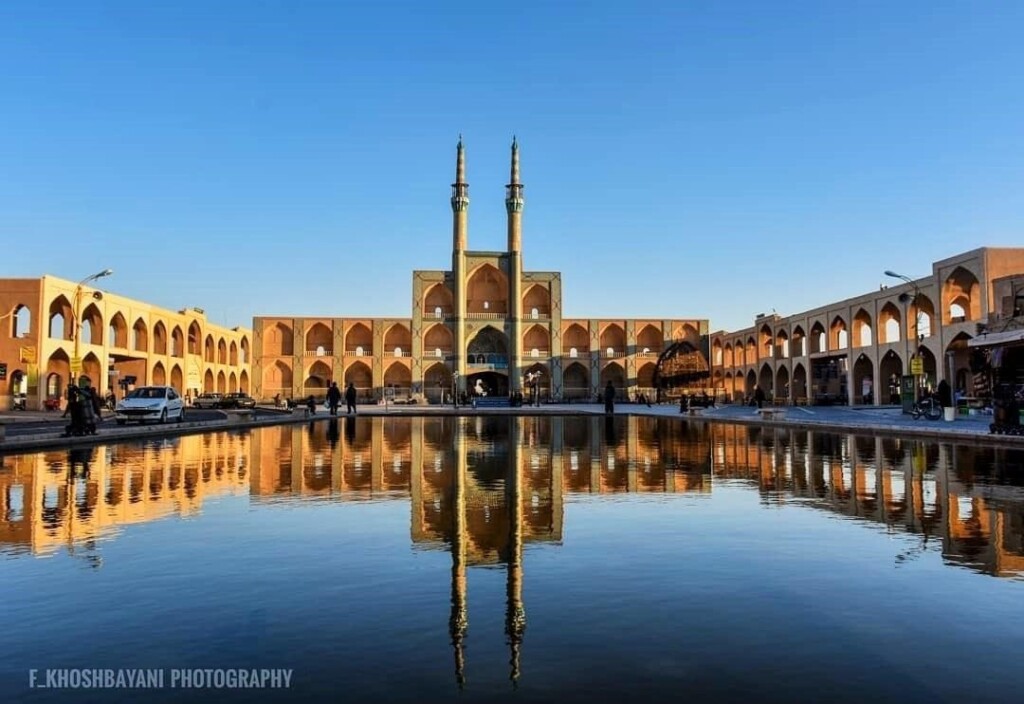
The city of Yazd is one of the largest cities in Iran, located at the center of the Iranian plateau. With its untouched traditional urban areas, this city has been recognized as a tangible cultural heritage by UNESCO. It holds many historical monuments with unique characteristics. Amir Chakhmaq Takyeh is a historical monument of Yazd in Mir Chakhmaq Square.
This Takyeh is known as Amir Chakhmaq Takyeh, Mirchakhmaq Tekyeh, or Mirchakhmaq. This monument is located in the eastern part of a square by the same name and was listed on the national heritage list of Iran in 1951.
There are other significant monuments in Mir Chakhmaq Square of Yazd in addition to the Takyeh. This includes a bazaar, a mosque, and two Ab Anbar (water reservoirs), which are located around the square.
History of Amir Chakhmaq Takyeh
This building was built by the ruler or Amir appointed by the Timurid ruler Shahrukh Mirza and Amir’s wife, Seti Fatemeh. He was the ruler of Yazd City in the 15th century and was known as Amir Jalaluddin Chakhmaq.
What Is a Takyeh?
Takyeh is a temporary or permanent structure that has different rooms for religious gatherings. Takyeh is a place to perform Azadari (mourning rituals) in the month of Muharram. The Takyehs are usually built-in areas with high foot traffic to attract attention.
There are Takyehs in most cities of Iran, but the ones in central regions of Iran near deserts have different architecture. The meaning of Takyeh in a literal sense is “leaning back on something”. In some cases, it means “the gathering place of Sufis”.
Features of Amir Chakhmaq Takyeh
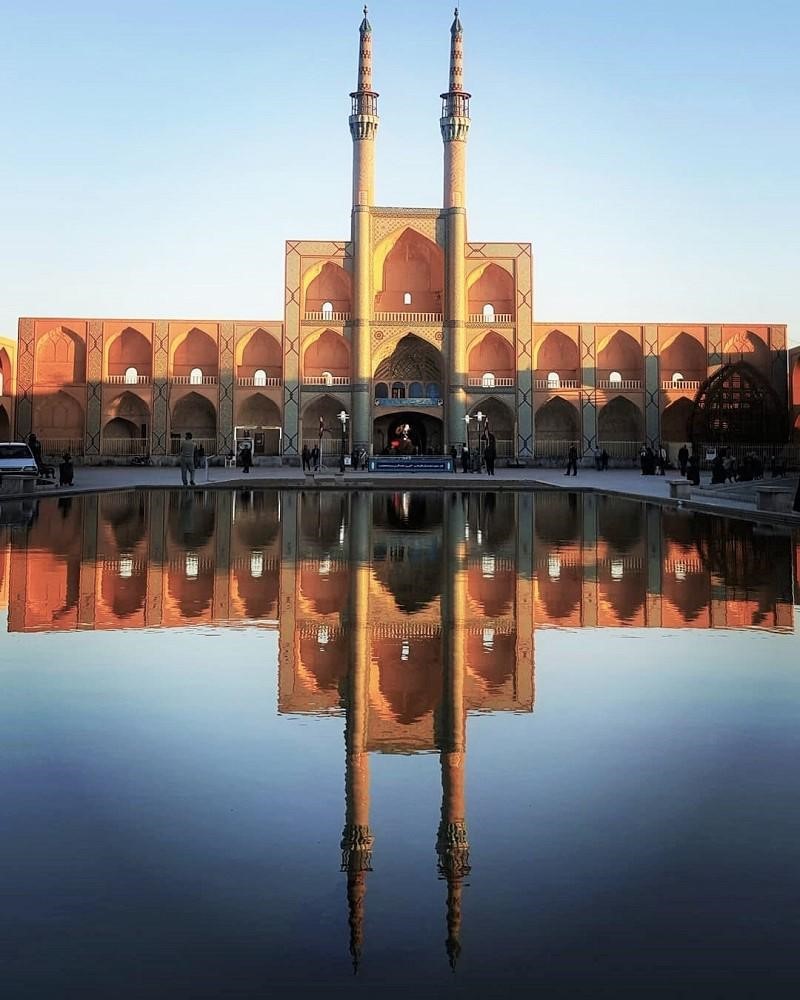
Amir Chakhmaq Takyeh is a building with two-story pavilions that are placed in eight vertical rows. These pavilions are symmetrical and face the opposite row. Two rows of these pavilions have three floors.
There is a main pavilion in the center of these pavilions, which is well visible due to its elevation. The main pavilion has high minarets and beautiful tilework decorations. In the past, these minarets were used to announce the Azan (the call to prayer) and the time of prayer.
The main pavilion of Amir Chakhmaq Takyeh was the residence of royal officials. This pavilion is actually part of Takyeh’s Shah neshin (an elegant room). The royal authorities would watch the Ta’zia ceremony in the main pavilion. There is also an inscription with the engraved date 1258 AH (1842 AD) in the Shah Neshin.
One of the characteristic features of Mir Chakhmaq is the external facade and the arched shah neshin rooms. The rooms on the Takyeh exterior are built with stepped architecture.
Amirchakhmaq Mosque of Yazd is located near this Takyeh. There is also a water reservoir under the Mirchakhmaq Takyeh. This reservoir was used by the public until about 40 years ago. Today it is open to the public as a water museum. The pavilion on the west side of the Takyeh has access to the reservoir.
Nakhl-e Heydariha Next to The Takyeh
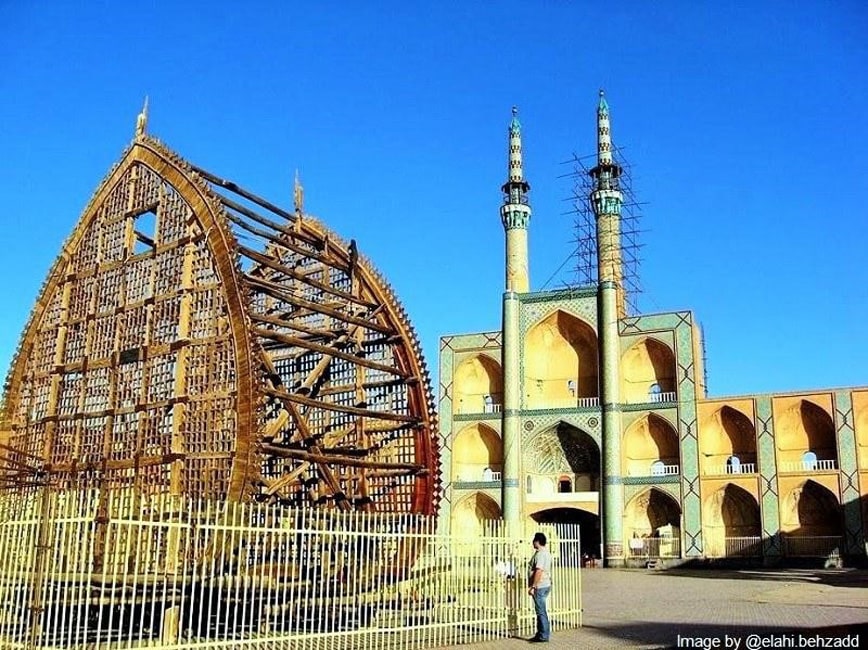
There is a large structure called Nakhl-e Heydariha in the Mir Chakhmaq neighborhood. the word Nakhl means palm tree, but this is actually a latticed structure made of carved wood. These structures have Gerehchini (decorative pieces) and large beams.
These Nakhls are carried around during the commemoration rituals of Imam Hussain in Muharram. The Nakhl Gardani (carrying the Nakhl) ceremony is one of the special rituals of the people of Yazd. Lifting the Nakhl is a difficult task and is accomplished by 150 people.
Nakhl-e Heydariha in the Amirchakhmaq Takyeh is a symbolic representation of Imam Hussain’s coffin. The construction of this Nakhl dates back to the Safavid period. Nakhl-e Heydariha has dimensions of about 8.5 x 8.5 square meters and its height is 8.5 meters. This structure was built in the 18th century.
Visit Amir Chakhmaq Takyeh in Yazd
The mourning rituals of Imam Hussain are performed every year in the 10 days leading to the Day of Ashura and the Ta’zia. The presence of buildings such as this Takyeh provides a great location for properly performing this ceremony. Due to its unique features, Amir Chakhmaq Takyeh in Yazd has become a historical attraction over time.
This building attracts a lot of tourists every year. If you travel to Yazd on an Iran tour package or personally, you should definitely visit Mir Chakhmaq. Visiting this beautiful building with a palm tree in its area will introduce you to the architecture of the past.
Destination Iran invites you to visit Yazd tourist attractions. Since Yazd is located in the desert region, check weather predictions before traveling to this city.
Where is the Amir Chakhmaq Takyeh?
This Takyeh is located in Amir Chakhmaq Square in the center of Yazd, on Imam Khomeini Street. You can see the exact location of the Amir Chakhmaq collection below:
Frequently Asked Questions About Amir Chakhmaq Takyeh
To find answers to your other questions, you can contact us through the comments section of this post. We will answer your questions as soon as possible.
Who was Amir Chakhmaq?
Amir Jalaluddin Chakhmaq Shami was one of the generals of Timurid ruler Shahrukh Mirza. During his rule over Yazd, he made many efforts for the development of Yazd City.
What tourist attractions are around Amirchakhmaq Square?
This square is a historical tourist complex in Yazd. It includes a Takyeh, mosque, Khanqah (monastery), caravanserais, bazaar, public bath, aqueduct, and cold water well.
Where is Nakhl-e Heydariha?
The wooden Nakhl Heydariha is located in Amir Chakhmaq square of Yazd and it is considered the oldest wooden Nakhl in Iran with 450 years.
What is the architecture of Amir Chakhmaq’s support?
The Takyeh is in the form of two-story pavilions that are placed together in 8 vertical rows. The symmetry of the pavilions on the sides of the building doubles its beauty. Two rows of pavilions have three floors. The main pavilion is located in the center of them. High minarets and beautiful tilework, arched Shah Neshins, and stepped pavilions are the features of the building’s architecture.


